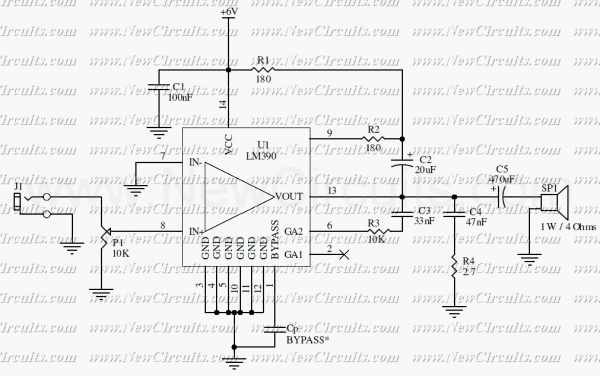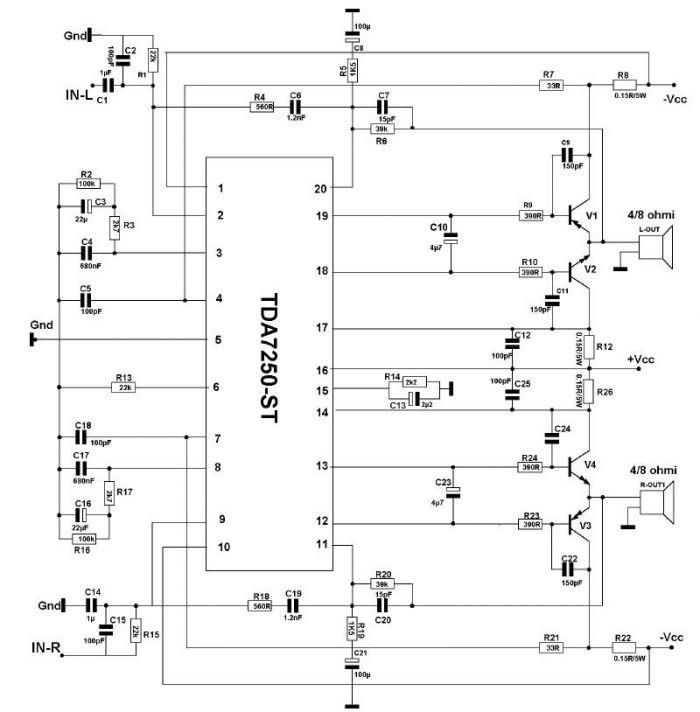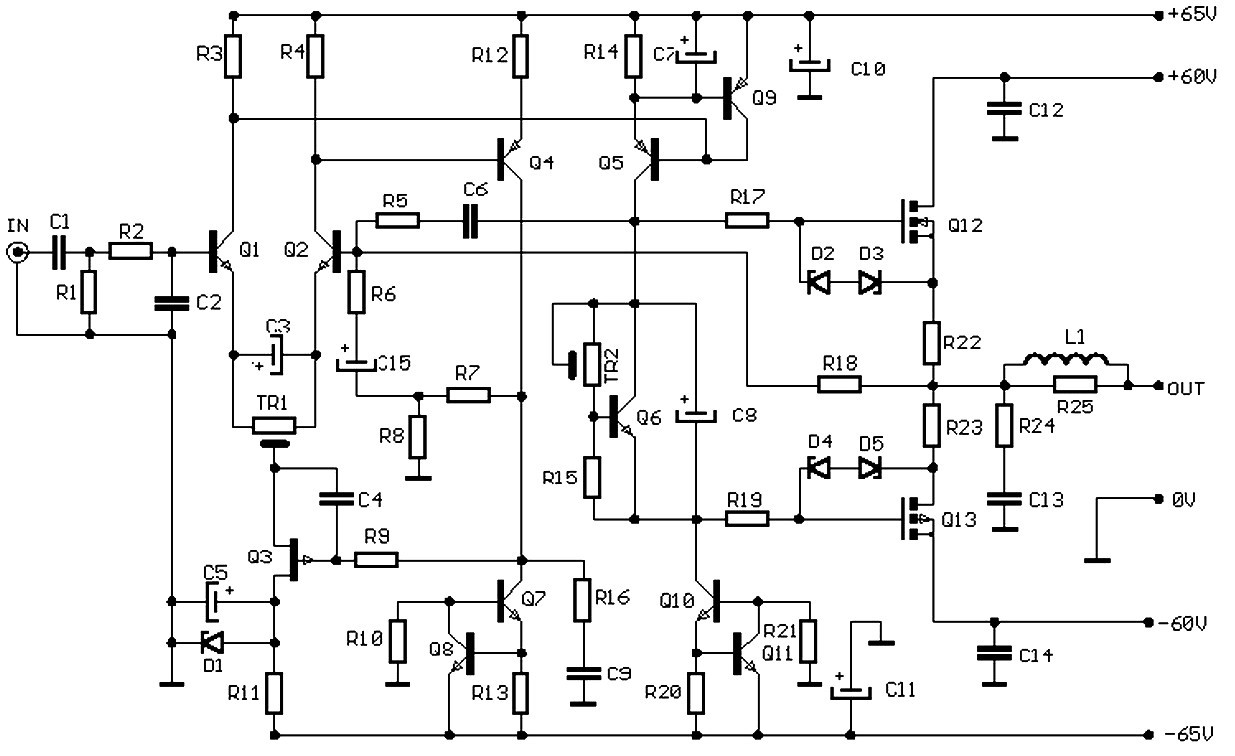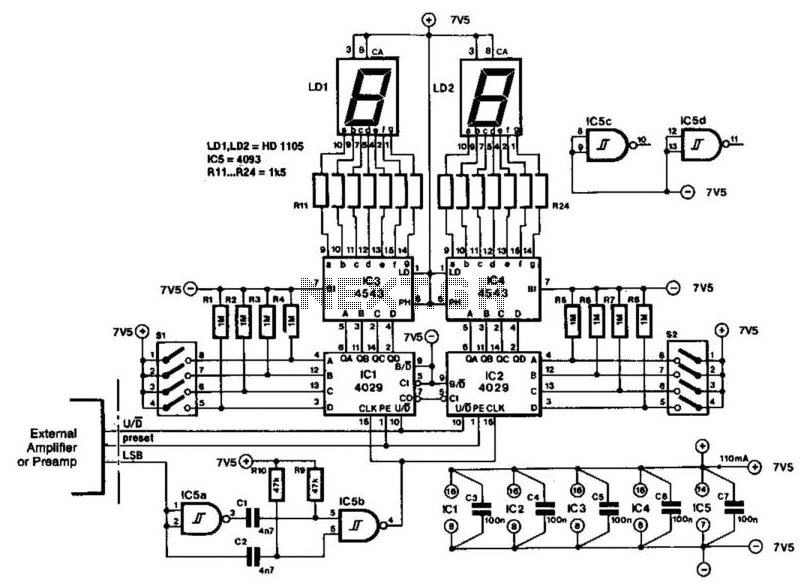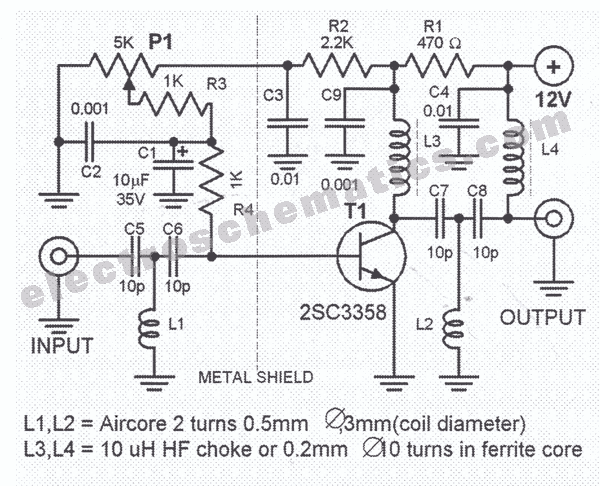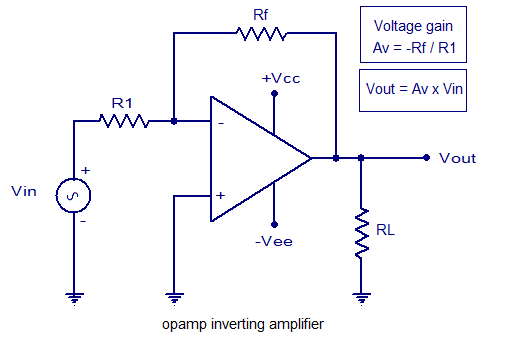
Increased Feedback-Stabilized Amplifier
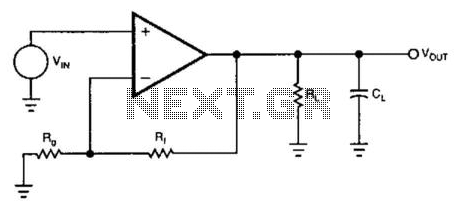
The standard approach for utilizing a current-feedback amplifier to drive a capacitive load involves isolating the load with a resistor in series with the amplifier's output. An improved method utilizes only the amplifier's feedback resistors. The feedback resistors play a crucial role in determining the amplifier's compensation, allowing for the selection of optimal values for these resistors to accommodate nearly any capacitive load. The feedback resistance RF influences the amplifier's bandwidth; increasing RF decreases the bandwidth, thereby enhancing the amplifier's capacity to drive capacitive loads. Conversely, the feedback resistor RG determines the amplifier's gain. Most data sheets do not provide sufficient information to calculate alternative values for RF. However, conducting a few experiments with a network analyzer can yield data to create a graph illustrating the relationship between the feedback resistor value and the capacitive load the amplifier can effectively drive. The procedure begins with the recommended value for feedback resistor RF from the data sheet, measuring the amplifier's frequency response without capacitive load, and noting the bandwidth. Capacitive loading is then gradually added until the response peaks by approximately 5 dB, recording this capacitance as the maximum permissible for that feedback resistor. The value of the feedback resistor is then increased, and the process is repeated to generate a comprehensive graph.
The current-feedback amplifier is a versatile component widely used in applications requiring efficient signal processing, particularly when driving capacitive loads. In traditional implementations, a series resistor isolates the capacitive load from the amplifier, which can limit performance. By employing feedback resistors exclusively, the design can be optimized for a range of capacitive loads without the need for additional components.
The feedback resistance RF is critical in defining the amplifier's bandwidth. A higher RF value leads to a narrower bandwidth, which enhances stability and performance when driving capacitive loads. This characteristic is particularly beneficial in applications where load capacitance can vary significantly, allowing for greater flexibility in design.
The feedback resistor RG, on the other hand, is responsible for setting the gain of the amplifier. The gain must be carefully balanced with the feedback resistance to ensure optimal performance across the desired frequency range.
To accurately determine the relationship between RF and the capacitive load, empirical testing is recommended. By starting with the manufacturer's suggested value for RF, one can establish a baseline frequency response. Gradual increments of capacitive loading will reveal the maximum capacitance the amplifier can handle before performance degradation occurs, typically indicated by a peak in the frequency response.
This iterative testing approach allows for the creation of a graph that correlates feedback resistor values with capacitive load capabilities, providing a valuable reference for engineers designing circuits that incorporate current-feedback amplifiers. Such data can significantly enhance the reliability and performance of electronic systems, particularly in high-frequency applications where capacitive effects are pronounced. The usual method for using a current-feedback amplifier to drive a capacitive load isolates the loa d with a resistor in series with the amplifier"s output. A better solution involves only the amplifier"s feedback resistors (Fig. 58-3(a)). Because the feedback resistors determine the amplifier"s compensation, you can select the optimal value for these feedback resistors for almost any capacitive load. Feedback resistance RF sets the amplifier"s bandwidth. Increasing RF reduces the amplifier"s bandwidth, which significantly improves the amplifier"s ability to drive capacitive loads.
Feedback resistor RG sets the amplifier"s gain. You cannot get the data necessary to calculate alternate values for RF from most data sheets. However, a few minutes at the bench with a network analyzer will generate the data to make a graph of the value of the feedback resistor vs. the amount of capacitive load the amplifier can drive (Fig. 58-3(b)). Start with the recommended data-sheet value for feedback resistor RF and measure the amplifier"s frequency response without any capacitive load.
Note the bandwidth, then add capacitive loading until the response peaks by about 5 dB. Record this value of capacitance; it is the maximum amount for that feedback resistor. Then, increase the value of the feedback resistor and repeat the procedure until you develop a graph like the one in diagram. 🔗 External reference
The current-feedback amplifier is a versatile component widely used in applications requiring efficient signal processing, particularly when driving capacitive loads. In traditional implementations, a series resistor isolates the capacitive load from the amplifier, which can limit performance. By employing feedback resistors exclusively, the design can be optimized for a range of capacitive loads without the need for additional components.
The feedback resistance RF is critical in defining the amplifier's bandwidth. A higher RF value leads to a narrower bandwidth, which enhances stability and performance when driving capacitive loads. This characteristic is particularly beneficial in applications where load capacitance can vary significantly, allowing for greater flexibility in design.
The feedback resistor RG, on the other hand, is responsible for setting the gain of the amplifier. The gain must be carefully balanced with the feedback resistance to ensure optimal performance across the desired frequency range.
To accurately determine the relationship between RF and the capacitive load, empirical testing is recommended. By starting with the manufacturer's suggested value for RF, one can establish a baseline frequency response. Gradual increments of capacitive loading will reveal the maximum capacitance the amplifier can handle before performance degradation occurs, typically indicated by a peak in the frequency response.
This iterative testing approach allows for the creation of a graph that correlates feedback resistor values with capacitive load capabilities, providing a valuable reference for engineers designing circuits that incorporate current-feedback amplifiers. Such data can significantly enhance the reliability and performance of electronic systems, particularly in high-frequency applications where capacitive effects are pronounced. The usual method for using a current-feedback amplifier to drive a capacitive load isolates the loa d with a resistor in series with the amplifier"s output. A better solution involves only the amplifier"s feedback resistors (Fig. 58-3(a)). Because the feedback resistors determine the amplifier"s compensation, you can select the optimal value for these feedback resistors for almost any capacitive load. Feedback resistance RF sets the amplifier"s bandwidth. Increasing RF reduces the amplifier"s bandwidth, which significantly improves the amplifier"s ability to drive capacitive loads.
Feedback resistor RG sets the amplifier"s gain. You cannot get the data necessary to calculate alternate values for RF from most data sheets. However, a few minutes at the bench with a network analyzer will generate the data to make a graph of the value of the feedback resistor vs. the amount of capacitive load the amplifier can drive (Fig. 58-3(b)). Start with the recommended data-sheet value for feedback resistor RF and measure the amplifier"s frequency response without any capacitive load.
Note the bandwidth, then add capacitive loading until the response peaks by about 5 dB. Record this value of capacitance; it is the maximum amount for that feedback resistor. Then, increase the value of the feedback resistor and repeat the procedure until you develop a graph like the one in diagram. 🔗 External reference
